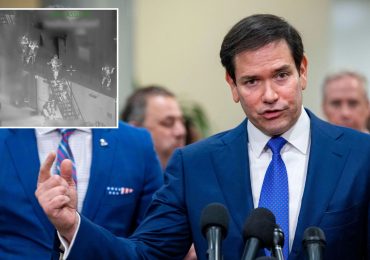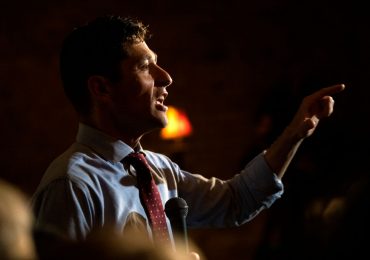If nothing else, Donald Trump keeps giving constitutional law professors more to write about. Lately the papers have been filled with professors opining on the question of whether Section Three of the Fourteenth Amendment disqualifies Trump from becoming president again. (Disclosure: I’m one of them.)
[time-brightcove not-tgx=”true”]
There’s something to be learned from the back-and-forth that goes beyond this particular case, though, because the debate over disqualification shows us something about how different kinds of arguments work in modern constitutional law. It shows us the influence of the Supreme Court on our constitutional discourse. And it shows us something about what it means to embrace a particular philosophy of constitutional interpretation.
For decades now, conservatives have attacked the idea of the “living Constitution”—a malleable document that can mean whatever purportedly enlightened judges want it to mean, based on their perception of what policy is best for society. I’ve always believed that this was a caricature—that you would find very few cases where anyone really said “I don’t care what the law is; this is what I think it should be.” But the case of Trump has surfaced some of those arguments—and not always from liberals. The Court should not disqualify Trump because it would be an anti-democratic thing to do, Michael McConnell argued. Ross Douthat warned that disqualifying Trump would be “so disastrous and toxic and self-defeating that no responsible jurist or official should consider it.” Yale law professor Samuel Moyn writes that it “could put democracy at more risk rather than less” and “make [Trump] more popular than ever.”
One doubts that these arguments will hold much sway at the Supreme Court, because the Court has told us recently that policy considerations do not trump the Constitution—indeed, they may not even be considered. When it comes to guns, for instance, “[t]he Second Amendment does not permit—let alone require—judges to assess the costs and benefits of firearms restrictions,” Justice Thomas told us in Bruen.
That’s the originalist line, and as Justice Elena Kagan said, we are all originalists now. And so people who fear the consequences of banning Trump make originalist arguments, too.
But there’s something a little strange about some of these arguments. Closer inspection suggests that they’re much more similar to living Constitution arguments than you might think—that in fact they’re simply policy analysis with some handwaving that attributes the policy to the framers. The drafters of the Fourteenth Amendment excluded oath-breaking insurrectionists from some offices, but not the presidency and the vice-presidency, says Larry Lessig, because they made a wise “compromise”—excluding the presidency but including presidential electors. “[T]he framers decided simply to ensure that the people who elect the president were not themselves insurrectionists.”
Would that be a wise policy? Maybe, but there is not a single piece of evidence in support of the idea that there was a compromise—that some people felt one way, some the other, and they met in the middle. Lessig sets out a policy choice here, but the connection to the framers is manufactured from thin air. In fact the alleged compromise simply did not happen, because Section Three does not ensure that the people who elect the president are not insurrectionists. It applies only to people who took an oath to support the Constitution and then broke it. Jefferson Davis could not be an elector, because he had taken the oath as a Senator. But thousands of former Confederate soldiers had not taken that oath. Those insurrectionists could serve as electors, and some of them went on to do just that.
The Supreme Court has told us that policy arguments do not matter; what matters is the policy choice the framers made. And so, unsurprisingly, people who want to make policy arguments respond by attributing them to the framers.
One might think this doesn’t matter much—the vogue for originalism is about form, not substance, so it has no more consequence than if the Supreme Court had told everyone to make their arguments in rhyming couplets. (“Trump can run for President/That is what the Framers meant.”) But in fact there is a serious downside.
The American people can understand and evaluate policy arguments. How should we balance our belief in popular sovereignty against the danger of electing people who will try to destroy democracy? That’s not a technical question, and people have most of the information they need to decide what’s a good answer. The same goes for balancing the right to bear arms against the right to attend school safely. But if the issue is what the drafters of the 14th Amendment did or didn’t think 158 years ago, the American people have very little ability to evaluate the truth of claims about the history. Much of the argument now going on about the application of Section Three turns on remarks from congressional proceedings in 1866, and to figure out whether what’s being presented is a consistent refrain or a cherrypicked outlier, there’s really nothing to do but read thousands of pages of the Congressional Globe. The average American can’t be expected to do that. They shouldn’t have to.
So what, you might think. The Supreme Court makes our constitutional decisions, and the Justices can tell good history from bad. Alas, no. If there’s one thing the turn to originalism has shown us over the past decades, it’s that the Justices aren’t in fact very good at evaluating historical argument. From the First Amendment and free speech to the Fourteenth Amendment and affirmative action, professional historians give the Court low marks for its historical analysis. What drives the decisions in difficult and controversial cases turns out to be the Justices’ policy views.
I am not saying that this is a conscious process. The Justices probably are doing their best to evaluate a complex and ambiguous historical record. But psychological research into “motivated reasoning” has shown that anyone forced to resolve ambiguity into a single answer is highly likely to come up with the answer they prefer.
And again, you might think, so what? If policy views determine outcomes—and the bitter fights over Supreme Court appointments shows that almost everyone believes this—then that’s the way it is, and it doesn’t matter what kind of window-dressing the Justices use.
But as I said before, the reliance on history obscures things. Most crucially, it obscures the fact that in difficult cases, with plausible arguments on both sides, the Justices are making choices. They are not simply enforcing the views of the long-dead framers; they are deciding which views to enforce, and also how to apply old principles to new contexts.
History answers fewer questions than we think, and most appeals to history are in fact picking a side in an old debate. Racial classifications are suspect because they are “contrary to our traditions,” wrote Chief Justice Warren, in an opinion striking down public school segregation in Washington, D.C. And we do have a tradition of rejecting racial classifications. But we also have a tradition of enforcing them, back to the very first laws declaring that the children of enslaved Black women and free white men inherited slavery and not freedom. Warren was picking a side, and when the Supreme Court later invoked this principle to invalidate affirmative action, it was applying a principle about classifications designed to perpetuate hierarchy in a new context, classifications designed to promote equality.
Both of those were choices, and the Justices should take responsibility for them. We have a tradition of excluding insurrectionists, and a tradition of welcoming them back into the halls of power. (I’ve written about how that worked out.) We have a tradition of pursuing justice at the expense of unity, and a tradition of doing the opposite. America contradicts itself, to paraphrase Whitman. It contains multitudes, and the argument that “this is not who we are” is most often a statement of aspiration for the future, rather than a statement of fact about the past. In the end, we are responsible for who we become, and for what becomes of our country. We should not pretend that history relieves us of that burden—and that honor.
Leave a comment








